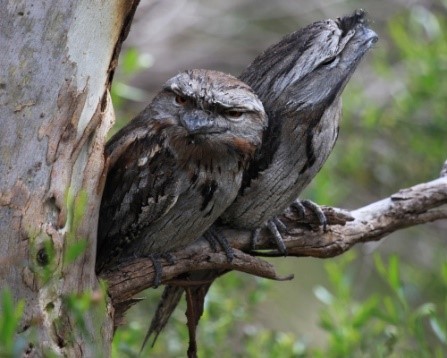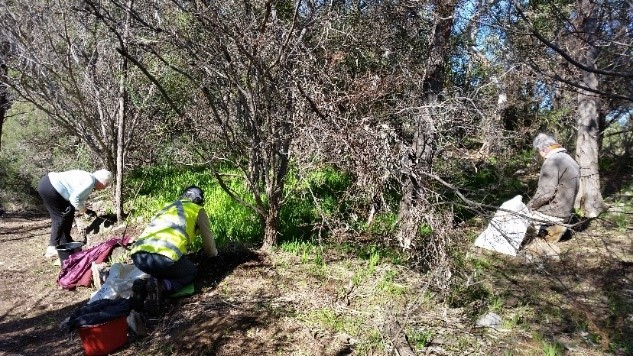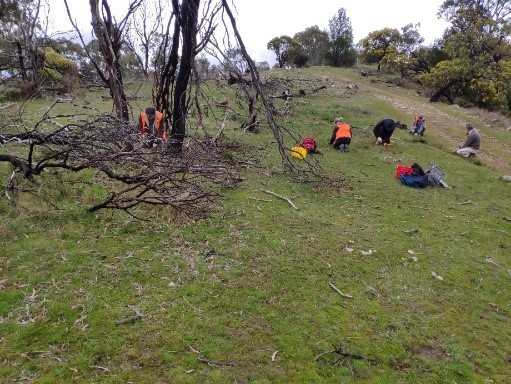A local volunteer group has further improved biodiversity in Athelstone with a Green Adelaide Grassroots Grant. Find out how they used funding to remove weeds, and plant new natives at Black Hill Conservation Park.
Friends of Black Hill and Morialta volunteer group (FoBHM) has worked hard to improve biodiversity in Black Hill Conservation Park.
Weeds have been a big problem, damaging the environment by hogging the water, nutrients, and sunlight from native plants. This reduces the native plant numbers as well as the availability of food and shelter for native animals and birds.
FoBHM gained a Green Adelaide Grassroots Grant to build on their past success restoring plants in the park. Read on to learn about their Grassroots Grant story.

Why is this grant project important?
Tall, established significant native trees in the park are under threat from weeds, particularly feral olive trees.

The FoBHM Grassroots Grant enabled the removal of feral olive trees and other weeds to protect the significant trees and make room to plant more natives. This will help provide food and shelter for local animals like yellow-tailed black cockatoos, tawny frogmouths, brown goshawks and wedge-tailed eagles, western grey kangaroos and short beaked echidnas.
How did the Grassroots Grant help?
FoBHM used the Grassroots Grant to employ a contractor to help remove olive trees by accessing tricky areas in the park with specialist equipment. The contractor’s work helped protect 84 significant eucalyptus trees.
The grant also helped them purchase supplies to support 3 community events, which saw more than 250 volunteers removing weeds and planting natives across 140 hectares (or about 1 ½ square kilometres) of the park.

How did the project improve the environment for the community?
Black Hill Conservation Park is popular with local and interstate visitors. They will now be able to explore and enjoy a healthier environment with a wider range of native plants and birds. Native animals will also be more likely to visit and use these improved areas.
As part of the project, FoBHM were supported by the local 4WD Adventurers Club who were able to provide 4WD transport to the project site, helping more members of the community get involved and saving an hour walk each way, allowing more time for restoration work on the ground.
This partnership highlighted a useful new tactic of using 4WD Adventurers Club for accessing difficult locations during future conservation projects.

Words of advice for future grant applicants
FoBHM President Liz Milner recommended that future grant applicants get to know their project site and create maps to help document where the threatened species live and where the weed edges are.
“Take photos of the area no matter how bad it looks and make sure there is a defining feature in the image so that if your application is successful, you can easily take photos to show how the area has improved after work is completed.
“If you have all this information, the grants write themselves,” Liz said.
Discover our Grassroots Grants stories.